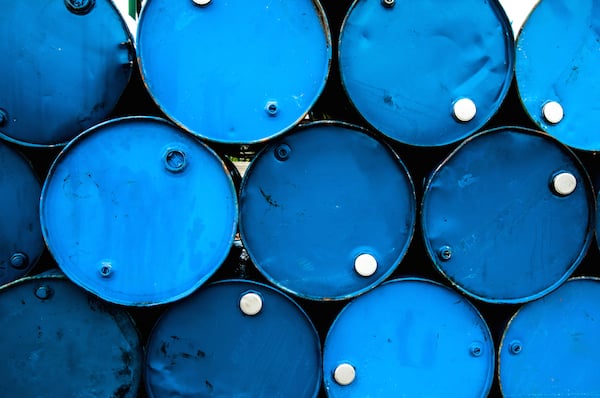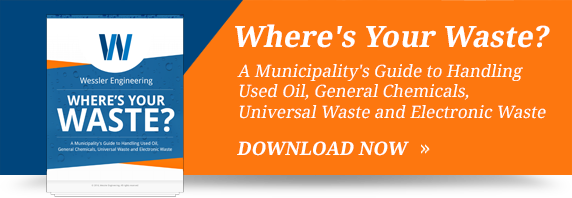Most municipalities are familiar with handling oil from activities associated with maintenance of vehicles and equipment. When used oil is collected and handled properly, it can be a source of income.

Oil is drained from vehicles or machinery because it has become dirty and no longer serves its intended purpose effectively. Even though it can no longer be used for its original purpose, once it is collected, reconditioned, or re-refined, oils can be used or sold in some form over and over again.
So, a used oil recycler may pay for used oil. The first part of used oil handling is understanding what is and what is not considered used oil.
Used Oil Is:
- Synthetic oil — usually derived from coal, shale or polymer-based starting material.
- Engine oil — typically includes gasoline and diesel engine crankcase oils and piston-engine oils for automobiles, trucks, boats, airplanes, locomotives, and heavy equipment.
- Transmission fluid
- Refrigeration oil
- Compressor oils
- Metalworking fluids and oils
- Laminating oils
- Industrial hydraulic fluid
- Copper and aluminum wire drawing solution
- Electrical insulating oil
- Industrial process oils
- Oils used as buoyants
Used Oil Is Not:
- Oil that is bottom clean-out waste from virgin fuel storage tanks, virgin fuel oil spill cleanups, or other oil wastes that have not actually been used.
- Products such as antifreeze and kerosene.
- Vegetable and animal oil, even when used as a lubricant
- Petroleum distillates used as solvents
- Used oils mixed with hazardous waste
- Oils that do not meet EPA’s definition of used oil can still pose a threat to the environment when disposed of and could be subject to the hazardous waste regulations and management practices.
Indiana has passed regulations for the generation and handling of used oils, conveniently called the “Used Oil Rule” (329 IAC 13). The rule only applies to oils predetermined to be acceptable for recycling.
If the used oil is mixed with a listed or characteristic hazardous waste, it is considered a waste and subject to regulation under the hazardous waste rules (329 IAC 3.1) and not the Used Oil Rule.
Used Oil Into Waste Oil
Used oil that contains over 1,000 parts per million of total halogens is presumed to have been mixed with a listed hazardous waste unless otherwise demonstrated.
If used oil is mixed with fuels or solvents, used oil has now turned into waste oil which can be expensive to dispose of properly.
Labeling
While the Used Oil regulations aren’t as difficult as other waste regulations, miss using one word and marking or labeling your used oils “Waste Oil” may cause you headaches. Containers or tanks containing used oil for recycling should be labeled or marked as “Used Oil.”
“Waste Oil” is regulated as a hazardous waste. If you determine an oil has been mixed with a solvent and has to be disposed of, then it should be labeled or marked as “Waste Oil” and no longer falls under the Used Oil Rule.
Refer to these labeling requirements:
- Label all used oil storage tanks, piping and containers with the words “USED OIL.”
- Used oil containers and tanks must be labeled or marked clearly. Replace faded or peeled signs, stickers or other labels as needed.
- Additional labels could include Department of Transportation diamond-shaped placards or National Fire Protection Association labels.
Tags

